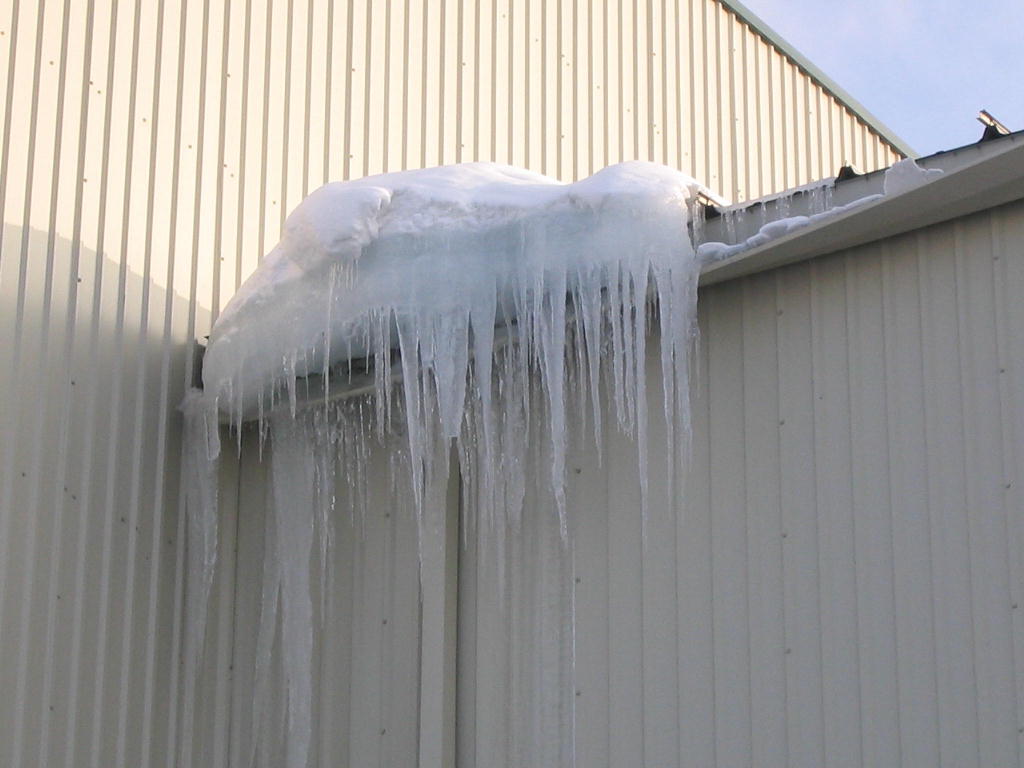Preparing Your Metal Roof for Fall: Maintenance Tips
As fall approaches, it’s critical to ensure the metal roofing systems you distribute are ready to perform through the cooler months. At ABC, we understand that distributors play a key role in guiding contractors and homeowners to maintain their roofs effectively. By sharing these fall maintenance tips with your network, you can help ensure the longevity and performance of our high-quality metal roofing products. For detailed guidance, refer to ABC’s Building Maintenance Manual.
Here’s how to prepare metal roofs for the fall season and support your customers.
1. Recommend Thorough Roof Inspections
Encourage contractors and homeowners to inspect metal roofs for signs of wear before fall weather sets in. This proactive step helps identify issues early, reducing warranty claims and ensuring customer satisfaction.
- Advise checking fasteners: Loose screws or fasteners can lead to leaks, especially under fall winds or rain. Recommend tightening or replacing them with a larger diameter screw.
- Recommend panel seam inspections: Gaps at panel seams can compromise performance. Suggest inspecting at both side laps and end laps, and resealing where necessary.
- Emphasize flashing checks: Flashings around vents, chimneys, and skylights should be secure and properly sealed to prevent water intrusion.
2. Stress the Importance of Debris Removal
Falling leaves and debris are common in autumn and can affect roof performance. Educate your customers on keeping roofs clear to maintain the durability of ABC’s metal roofing systems.
- Promote gentle cleaning methods: Recommend using soft-bristle brooms or leaf blowers to remove leaves and twigs, avoiding tools that could scratch protective coatings.
- Focus on valleys and low-slope areas: These spots are prone to debris buildup, which can trap moisture and lead to corrosion if not addressed.
3. Guide on Proper Roof Cleaning
A clean roof enhances both aesthetics and longevity. Provide your customers with best practices to maintain the appearance and integrity of their metal roofs.
- Suggest mild cleaning solutions: Advise using mild detergent and water with a soft brush or cloth, followed by a thorough rinse to avoid residue.
- Warn against harsh methods: Discourage pressure washers or abrasive cleaners, which can damage coatings and void warranties.
- Offer professional cleaning options: Recommend certified contractors for larger or heavily soiled roofs to ensure safe and effective cleaning.
4. Highlight Gutter Maintenance
A well-maintained gutter system is essential for metal roof performance. Share with your network the importance of clear gutters to prevent water backup and potential damage.
- Encourage gutter cleaning: Advise removing debris from gutters and downspouts to ensure proper drainage.
- Promote gutter inspections: Suggest checking for secure attachment and proper slope to direct water away from structures.
- Recommend gutter guards: These can help reduce debris buildup, making maintenance easier for end users and minimizing service calls.
5. Advise on Trimming Overhanging Branches
Branches that overhang roofs can cause scratches or coating damage, especially during fall storms. Help your customers protect their roofs by addressing this risk.
- Suggest proactive trimming: Recommend cutting branches 6 to 10 feet away from the roof to prevent contact and debris buildup.
- Refer to professional arborists: For large trees or complex jobs, advise hiring professionals to avoid accidental roof damage.
6. Emphasize Ventilation and Insulation
Proper ventilation and insulation are critical to preventing moisture issues and ice dams, which can affect roof performance in colder regions.
- Promote attic ventilation checks: Clear vents prevent heat buildup, which can cause condensation and damage under the roof.
- Highlight insulation benefits: Adequate insulation helps maintain consistent temperatures, reducing the risk of ice dams and ensuring energy efficiency.
7.Encourage Professional Inspections
While DIY maintenance is valuable, professional inspections ensure thorough care. Position your customers as trusted advisors by recommending ABC’s certified contractors.
- Advocate for certified professionals: Contractors experienced with metal roofing can spot issues others might miss, ensuring product reliability.
- Suggest early scheduling: Encourage customers to book inspections before the fall rush to secure timely service and maintain roof warranties.
8.Provide Guidance on Touch-Up Paint
Minor scratches or chips in the roof’s coating should be addressed promptly to prevent corrosion and maintain aesthetics.
- Supply manufacturer-approved paint: Offer touch-up paint for ABC’s colors to help conceal small scratches.
- Share application instructions: Ensure customers follow proper application techniques to maintain warranty coverage and protect the roof.
Why Fall Maintenance Matters
By equipping your customers with these maintenance tips, you reinforce the value of ABC’s durable, high-performance metal roofing products. Proactive maintenance reduces callbacks, enhances customer satisfaction, and strengthens your reputation as a trusted distributor. Share these tips through your channels, such as newsletters, training sessions, or consultations, to empower contractors and homeowners alike. For comprehensive maintenance instructions, direct your customers to ABC’s Building Maintenance Manual.
At ABC, we’re here to support our distributors with top-quality products and resources. For more information on our metal roofing systems or to connect with our team for training and support, contact us. Let’s work together to ensure every roof performs flawlessly this fall!








